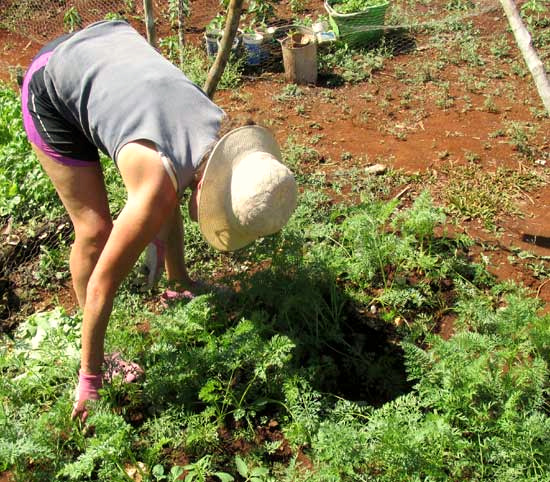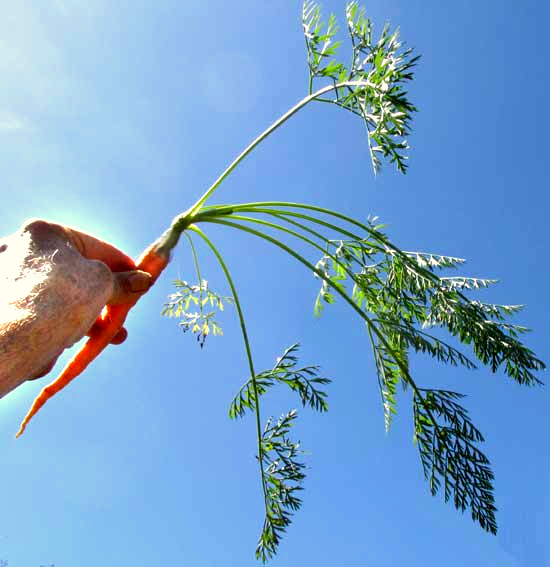Excerpts from Jim Conrad's
Naturalist Newsletter
from the February 19, 2017 Newsletter issued from Rancho Regenesis in the woods ±4kms west of Ek Balam Ruins; elevation ~40m (~130 ft), N20.876°, W88.170°; north-central Yucatán, MÉXICO
GROWING CARROTS IN THE YUCATAN
In contrast to the Radishes, the Carrot plants, DAUCUS CAROTA ssp. SATIVUS, have exceeded my expectations. Carrot plants are cultivars of the species often called Queen Anne's Lace, or Wild Carrot. Since they're native to Europe and southwestern Asia -- but appearing in abundance along roads in North America -- I thought that maybe our abnormally warm growing season also would hurt them. However, below you can see how healthy the plants look as volunteer gardener Jea from Canada works on the beds

Carrot seeds are so tiny that when they germinate they have little stored-up food in their endosperm to see them through periods of dryness and/or temperature extremes. Therefore, plastic was spread atop the soil to keep conditions in the soil from swinging between extremes during the critical germination period. Nearly every seed germinated. When the first green sprouts appeared, the plastic sheet was removed.
For their long taproots to develop into carrots, Carrot plants need deep, loose soil, which we don't have here. Therefore I gathered broken-up soil mixed with compost into ridges despite the fact that soil in mounds dries out faster than level soil, which is something we don't want here during the dry season. I just made sure that every day the hills were watered.
Our carrots still are small, but I'm eating them anyway, not only because they're so good but also I expect that at any time the mole-like pocket gophers called Tuzas by the Maya will discover the bounty, and overnight eat them all. Below, you can see a sweet, beautiful carrot just pulled from the soil:
